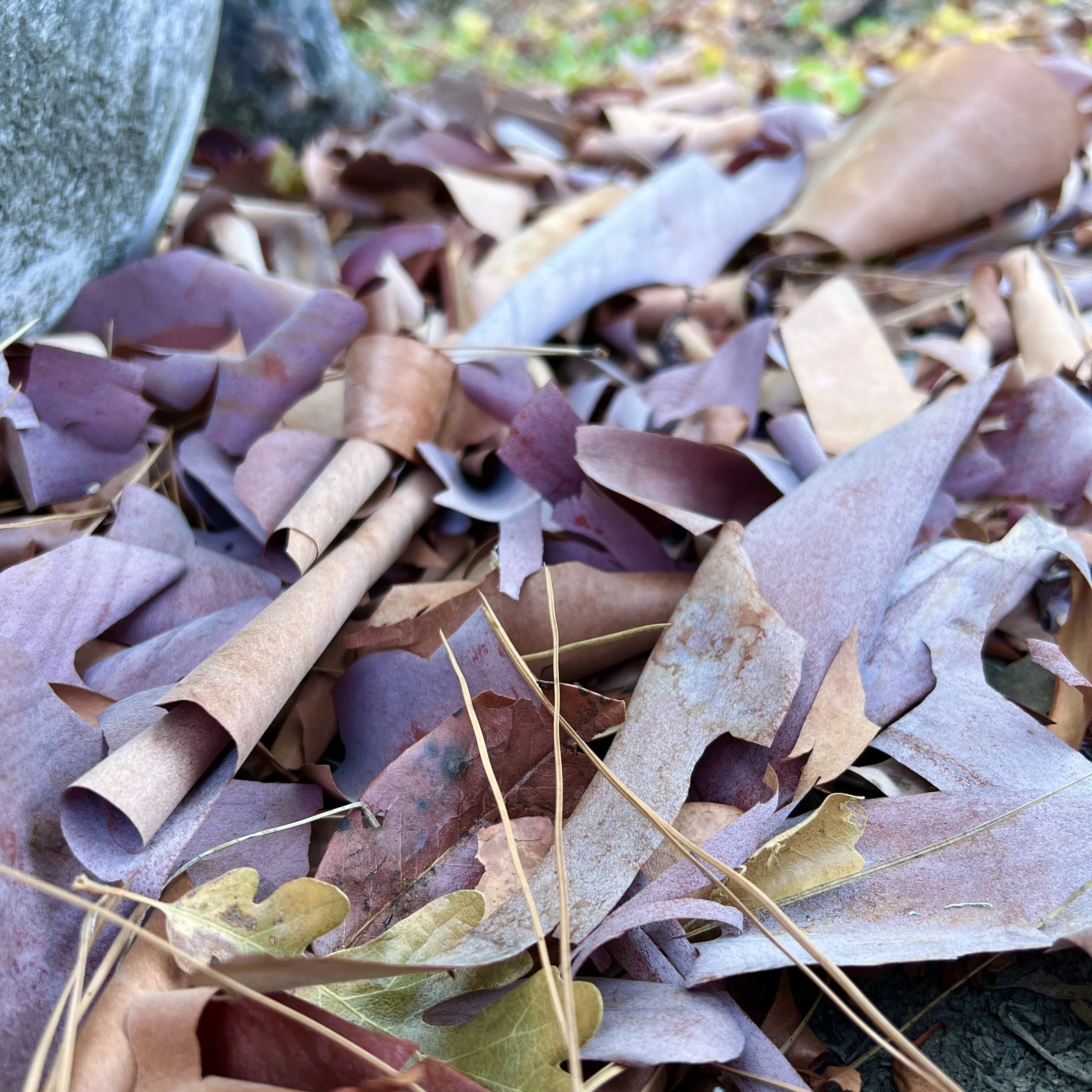Pacific Madrone Bark(Strawberry Tree) - Natural Dyeing
The Pacific Madrone is also known as the Madroo, Madroa, Bearberry, Strawberry Tree, or simply Arbutus. It’s a broadleaf evergreen tree with smooth, beautiful papery orange-red bark. Starting around the Summer Solstice, the bark peels off the tree in gorgeous, cinnamon-like curls, leaving the trunk with a greenish appearance that has a satin sheen and smoothness. The bark sheds naturally, making it sustainable to harvest. The exposed wood sometimes feels cool to the touch, just like Manzanita. In spring, it bears sprays of small bell-like flowers, and in autumn, red berries.
This iconic tree was an important medicine for many Native peoples in the Northwest. It’s found on the west coast of North America, from British Columbia to California. Traditionally, a decoction made from the bark was used topically for sores and minor wounds, and a tannic, at times astringent, tea was used to soothe an upset stomach and treat colds. The flavor has been described as a combination of cinnamon, mushrooms, and wood smoke.
The bark is rich in tannins, making it an ideal material for natural dyeing. The bark makes soft, earthy peaches, while the leaves make beautiful yellow colors.
Folklore & Magick: The Madrone is a symbol of strength, resilience, and adaptability.
Range: It is found on the west coast of North America, from British Columbia to California, and is also scattered on the west slope of the Sierra Nevada Mountains. It becomes rare south of Santa Barbara County, with isolated stands south to Palomar Mountain, San Diego County, and northern Baja California, Mexico.
Growing Habitat: They thrive in rocky slopes, bluffs, and open woodlands, often alongside other trees like Douglas fir and oaks.
Harvest Time: You can begin gathering bark from the ground in July through October or until the rainy season begins. The window for gathering may vary.
DyeStuff: Bark
Fabric Samples are a mix of white and mixed linen, cotton, wool, and silk
Dyeing Instructions can be found in my book ‘The Natural Dye Handbook’. This is an affiliate link for bookshop.org. This means that if you purchase through my link, I may earn a small commission, at no extra cost to you.
More information is available to paid members on my Patreon. If you're interested in subscribing to my Patreon and supporting my exploration of natural dyes. My Patreon is mainly focused on slow stitching, but I’ve begun posting about four natural dye plants each month.
You can find sashiko thread naturally dyed with Madrone Bark in my shop.
I’m teaching at Art Stays this September. If you are interested in exploring your landscape and foraging for plants that produce natural dyes and learning more about how different mordants affect color, this is the Natural Dye Retreat for you. There are other workshops happening at the same time so please check those out as well.
This is a photo of my favorite Madrone tree that I hug and thank for its incredible gifts and beauty every time I visit it at Emandal. It makes my heart so happy. This glorious tree lives by the cabins in the woods. It's gigantic and gleams in the sun.
The cinnamon-like bark curls lay nestled on the ground in piles amongst pine needles, oak leaves, and poison oak. I'm always super aware of keeping my eyes open. This photo was also taken at Emandal, but even the smaller trees by my house always have poison oak growing by them.



